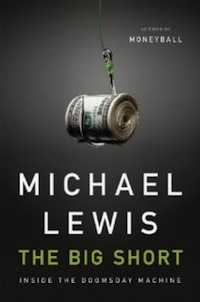Here’s some potentially great news from the UK Government’s 2011 budget, for those of us who want to grow our money rather than spend it on petrol or new build houses.
Buried in the detail of page 90 of the full budget document is a snippet mentioning the Government expects to raise £2 billion from National Savings & Investments (NS&I) in 2011-2012.
I don’t know why Osborne didn’t specifically mention it today. It’s true £2 billion is small change compared to the total £165 billion the government will borrow. But it could be a £2 billion bonanza for savers who’ve tried to find safe ways to guard against inflation, after NS&I suddenly withdrew its index-linked certificates from sale last July.
The crucial statement from the budget:
The projection for the CGNCR in 2011-12 is £120.4 billion. Gross gilt redemptions are £49 billion and National Savings and Investments (NS&I) is expected to make a contribution to net finance of £2 billion.
According to the budget document, £4 billion is an increase from just £300 million in 2010-2011, which suggests that someone in the Treasury appreciates the strong demand for NS&I products, even if George doesn’t.
What’s not clear from the wording above is that this new funding will definitely be raised by issuing fresh inflation-linked certificates. However NS&I itself released an update on its operations today, which confirms it will be bringing back the Index-Linked certificates:
2011-12 Net Financing target
As confirmed in the Debt Reserves Management report, issued today, NS&I’s target for Net Financing for 2011-12 is £2 billion in a range of £0 billion to £4 billion. This positive Net Financing target will allow NS&I to plan the re-introduction of Savings Certificates for general sale in due course. Currently only savers with maturing investments in Savings Certificates can continue to rollover their investments for a further term. Subject to market conditions, NS&I expect to be bringing Savings Certificates back on general sale in 2011/12.
NS&I can also confirm that a new issue of Index-linked Savings Certificates will retain index-linking against the retail prices index (RPI).
So that’s new index-linked certificates, and still linked to RPI too. (There had been fears it would be switched to CPI). Better get ready to fight for them!
Now, we still don’t know how much of the £2 billion will be allocated towards National Savings Index-Linked certificates, as opposed to its other products.
But at least some will – and provided the interest rate they pay above inflation is halfway attractive, the tax-free status and government-backing of the NS&I inflation linked products is impossible to beat for cautious savers.
Indeed, the demand for these sorts of index-linked products is clear from the rush of alternative inflation-linked savings bonds that banks and building societies have launched in recent weeks. The fear of inflation is growing.
For that reason, I think that whatever fraction of £2 billion NS&I issues as index-linked certificates will find a home no problem. Given such strong appeal, you should register with NS&I to ensure you’re told the moment they go on sale.





